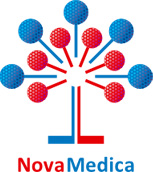
3-year-old pharma looks set to fight rectal and eye problems, and then 15 more
21 October 2015
NovaMedica, a young Russian pharma, has been increasingly focused on nanotechnology in its R&D. For example, in the most recent development, this U.S.-Russian JV is about to start a series of clinical trials for its new drug candidate to treat the dangerous inconveniences of hemorrhoids. This is the firm’s inaugural product based on in-house R&D results without tapping into external technologies, the project owners said, claiming that “the drug candidate is built on a unique action mechanism untapped in products currently available in the market.” The global market for anti-hemorrhoids products and technologies is estimated by experts to be worth a pretty noticeable $10bn a year, and the Russians are hoping to carve out a perceptible share of it. Long term, NovaMedica has a broader focus. In addition to transferring to Russia advanced foreign technologies to treat eye diseases, the company has unveiled plans to develop more than a dozen “brand new” drugs based on proprietary nanotechnology within the next seven years.
Just recently, NovaMedica announced it had received the green light from the top Russian federal regulators for phase I clinical trials of its new drug candidate, a gel to treat and ease the symptoms of hemorrhoids, a very annoying and painful rectal problem.
Using nanotechnology enabled NovaMedica to substantially improve the physical and chemical properties of the active agents the new drug designated “NLN’ is based on, the developers said. During the preclinical trial stage the product was said to reveal a “400% increase” in dose-dependent anti-inflammatory and wound-healing effect, compared to other drugs administered to lab animals.
In addition, applying nanotech is also believed to have helped find a new combinatory solution unexploited in this therapeutic field so far. For the first time in history, NovaMedica underscored, a number of active substances, earlier thought to be completely incompatible in one composition, were peacefully ‘married’ to provide both medicinal and pain-relieving actions all together. Marketing the product in the form of a non-fat gel will make it easy to use for a longer time, the developers hope.
According to Mikhail Getman, vice president for pharma operations at NovaMedica, as the new project takes shape, “foreign investors get interested.”
The young company appears to already see windows of opportunity both in the domestic and international markets for anti-hemorrhoids products and technologies. The global market is estimated by experts to be worth $10bn a year, with surgical services and related technologies accounting for the lion’s share of the total (up to $8bn). “The NLN could compete both with drugs and invasive surgical methods,” Mr. Getman believes.
A broader focus
NovaMedica was set up in 2012 as a joint venture between Domain Associates, a U.S. company, and Rusnano, Russia’s nanotech giant. Last year the Russians made a noticeable move in the international tech transfer market, when it inked a partnership with Horus Pharma SL, an innovative French company, which granted the Russian firm the rights to commercialize across Russia and in some former Soviet Union countries a line of new French solutions for a range of ophthalmological disorders.
Also, just this past summer NovaMedica announced it would take up to seven years to develop, or participate in the development of, “15 innovative nanotech-involved pharmaceutical products,” supposedly brand new ones. Plans are very ambitious, and we hope they will be properly backed financially.
Our news
-
14 March 2024
-
26 February 2024
-
NovaMedica team wishes you a Merry Christmas and a Happy New Year!
26 December 2023
Media Center
-
Big Pharma’s ROI for drug R&D saw 'welcome' rebound in 2023: report
25 April 2024
-
Orphan drug market to reach $270B by 2028 : Evaluate
25 April 2024
-
Russian drug for the treatment of viral hepatitis will be exempt from duty in Mongolia
24 April 2024
-
PM Mishustin: “We need to increase the production of vital and essential drugs in Russia”
24 April 2024